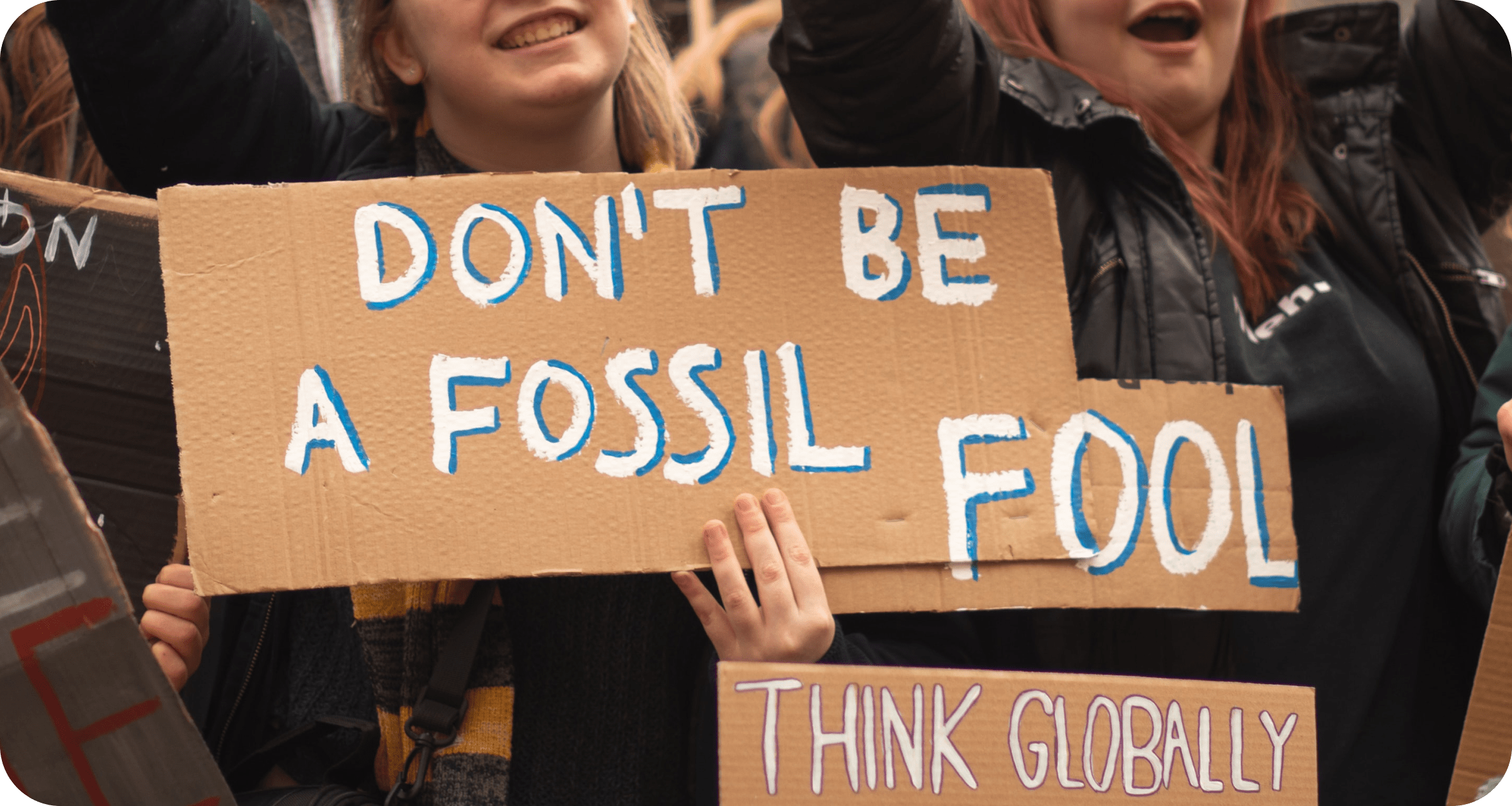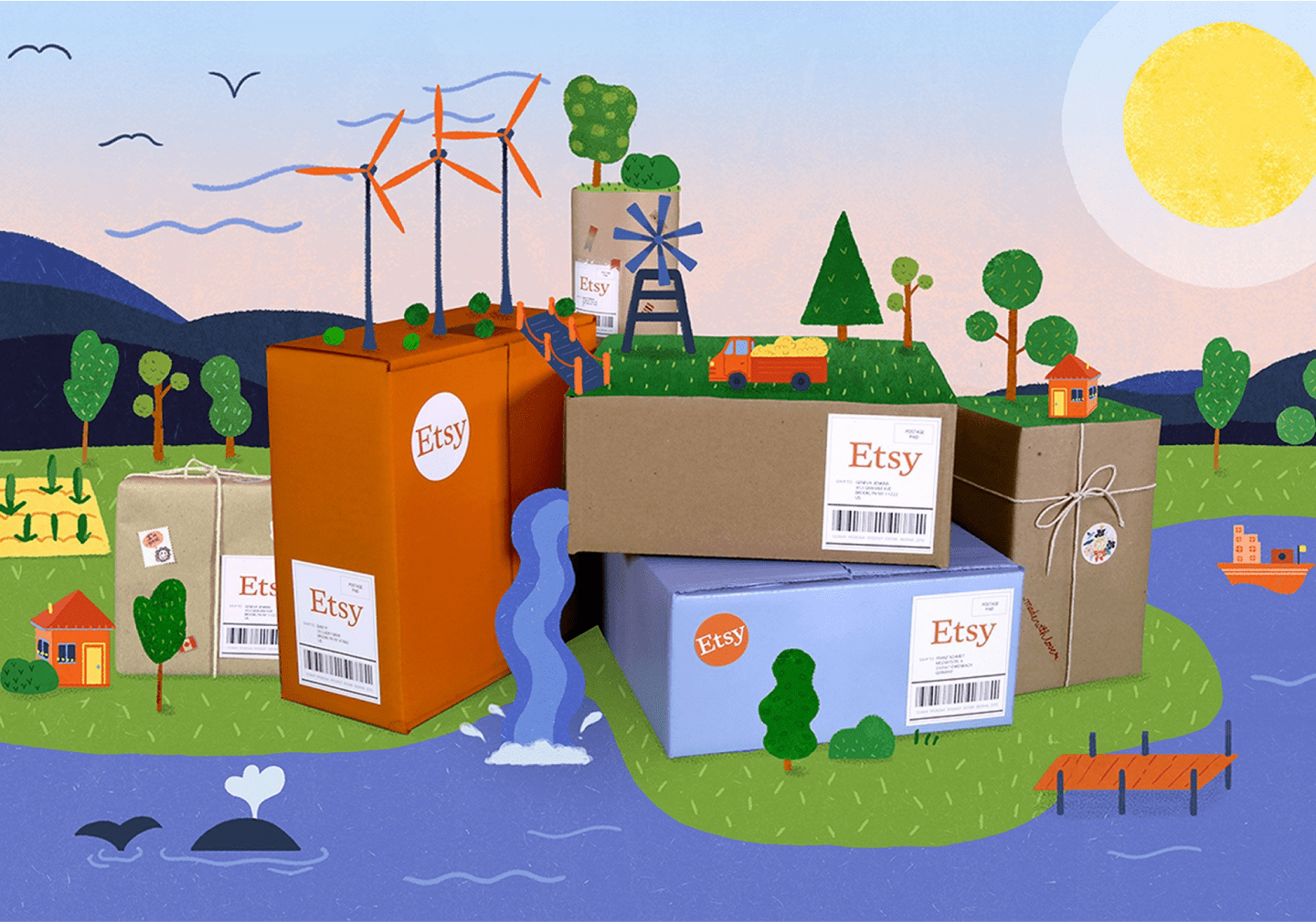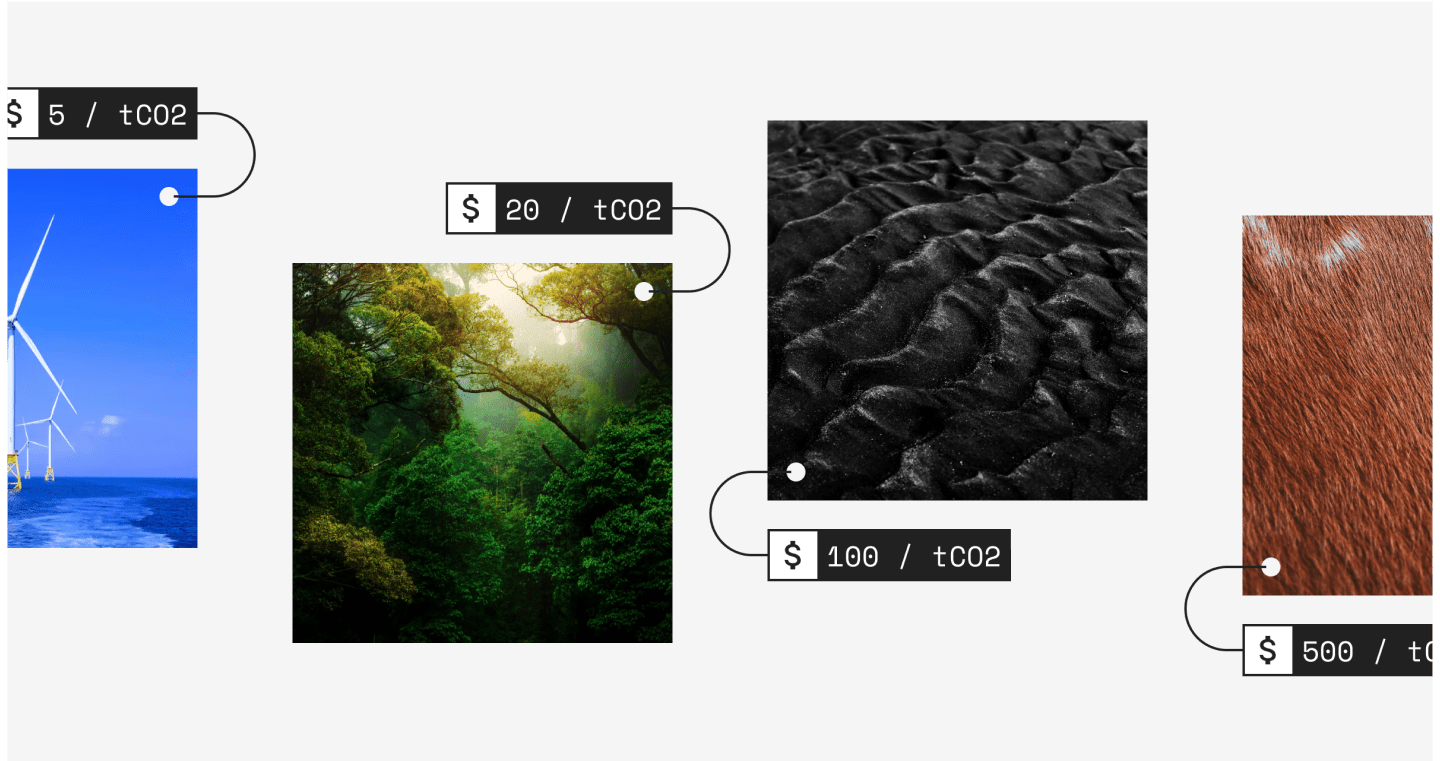

Is carbon offsetting greenwashing?
It's a question we hear a lot. And it's a valid one – sometimes carbon offsetting is greenwashing. But, approached in the right way, offsetting has the potential to make real climate impact. So, what is the right way?
To get carbon offsetting right, businesses need to tie good words to good deeds. And those deeds must be well-thought out to ensure you truly have the positive planetary impact your company is hoping for.
Why, you ask, what happens if companies don't spend the time to think through sustainability initiatives?
Let's take an example from advertising history.
In 1930, American Tobacco – the maker of Lucky Strikes cigarettes – published a famous ad claiming “20,679 Physicians say ‘LUCKIES are less irritating’” to the throat. The rest, as they say, is history. We know how cigarettes have damaged public health. With hindsight, American Tobacco’s claim feels quite shocking.

With that in mind, consider the corporate sustainability claims we make today. Might they be judged similarly tomorrow?
Many brands want to align with climate action without doing the hard work that's required to get it right and make real impact. Some actively greenwash products and services to direct attention away from the industrial processes that continue to poison the planet’s lungs. But real climate action can’t wait any longer. The impacts of rapid climate change on future generations will be just as damaging as tobacco (if not more).
History certainly won’t be kind to companies that wilfully mislead. But what about brands who unintentionally greenwash?
Imagine it. You execute the first carbon offsetting plan at your organisation, and broadcast your great achievement to the world. The press release has pride of place on your company website, is pinned to every social media channel, and links from every staff email signature.
But the offset credits you bought were low-quality and didn’t offset your emissions as promised. In fact, because they didn't have the climate impact they claimed, the offsets have done more harm than good…
Suddenly your brand is in line for a public shaming.
You may not be VW. You may not be orchestrating Diesel-gate levels of deceit. And any fallout won’t cost you $33 billion. But greenwashing headlines can still hit your bottom line.
In the EU, the European Commission is bringing in rules to police green marketing on consumer-protection grounds. Meanwhile, the UK’s Advertising Standards Authority is clamping down far harder on greenwashing adverts from 2022 onwards. And they seem to mean business, notably doling out big fines to Ryanair, BMW, and Shell – and banning greenwashing adverts from high-profile brands like HSBC.
Regulatory fines may be only the start of the problems if customer trust is lost.
So just how do you avoid greenwashing in carbon offsetting for businesses?
The greenwashing risk is real, but avoidable
If you work in a sustainability role or you’re a conscientious brand manager building for the long-term, greenwashing accusations might already give you nightmares. You want to be part of the solution, not the problem.
The good news is that, although greenwashing through carbon offsetting is a very real risk, it isn’t an inevitable part of your company’s climate journey.
When done right, activities like carbon offsetting absolutely can differentiate you from your competitors, improve brand equity, and increase long-term sales and loyalty. All this, while having an immediate and measurable positive impact on the planet.

There are 4 main areas to consider when looking at how to approach carbon offsetting without greenwashing:
- Strategy: ensuring offsetting is one part of a wider sustainability strategy designed to maximise climate impact
- Quality: only buying high-quality carbon offsets
- Impact: Exploring contribution to carbon projects instead of (or on top of) offsetting to compensate for company emissions
- Communication: Getting the messaging about your climate initiatives right
Let's take a look at each in turn.
Carbon offsetting and your sustainability strategy
If offsetting is the only sustainability effort a business is making, the accusation that carbon offsetting doesn't work, and is just greenwashing may be well-founded. It should be part of a wider strategy for minimising emissions and maximising positive impact.
As businesses, we all need to focus on reducing emissions first. But it's unlikely you'll be able to completely avoid emissions from your business and supply chain, especially if you rely on transportation or manufacturing. In addition, we've collectively emitted hundreds of billions (if not trillions) of tons of greenhouse gases into the atmosphere. Now, we must remove them.
Once you've identified all the emissions you can reduce directly, your footprint will be smaller. But you’ll still have a footprint. To minimise the impact of remaining emissions, you can offset them by supporting carbon projects which are either a) actively reducing emissions (emissions avoidance or reduction); or b) removing existing carbon from the atmosphere (carbon removal).
This is why carbon offsetting has a vital role as part of an impact-led sustainability strategy.
This strategy should:
- Show real commitment to reducing your impact on the planet
- Be honest and transparent about where you’re currently at
- Detail your plans to make improvements – including which offsetting projects you’re supporting and why
For more detailed guidelines, take a look at our blog on how to ensure your company sustainability strategy has real impact – and there's a useful checklist included to help with the process too.
But for now, let's have a look at an example – Etsy and their 'commitment to a world of good'.

Etsy offset all shipping emissions using carbon offsets, immediately neutralising the impact of this high-emissions activity.
But, they're simultaneously collaborating with industry leaders, shipping reps and policy makers to lead the shipping industry toward decarbonisation. And what’s interesting is the company knew steps towards long-term change were needed, but also recognised that the climate emergency needs short-term action – so they're combining the two to maximise impact.
With a clear example in mind, let’s now focus on why the quality of the project matters so much…
Why high-quality offsets are the only choice
Let's return to the question of: is carbon offsetting greenwashing?
We've already highlighted that if offsets are used in a silo to make a business look like it's doing it's bit on climate from the outside, without having a wider sustainability strategy in place, then they could be just greenwashing.
The other key element to avoiding greenwashing in offsetting is the quality of offsets. Not all offsets are created equal, unfortunately.
If you’ve ever purchased offsets, you’ll know there are loads of offset providers, as well as a vast range of project types and variety of carbon prices to choose from. So how do you choose?
If your focus is on making real climate action – and not just a tick box sustainability exercise – here's how.
First, resist the urge to focus on low-cost and concentrate instead on high-quality.
Purchasing carbon offsets is still a relatively new market – known as the Voluntary Carbon Market (VCR). It’s largely unregulated, so there are an abundance of offsets around which are ‘low-quality’ i.e. the projects are untrustworthy or illegitimate.
By opting for low-quality projects, you may not be offsetting as much carbon as you think. And if you’re really unlucky, you may not offset any carbon at all. This is where many businesses inadvertently open the door to accidental greenwashing.
Avoid risk by learning to identify high-quality carbon offset credits. These credits should come from offsetting schemes verified by an independent 3rd party (such as Gold Standard or Verra) and/or use technology to measure and track the impact in ways that increase confidence in the quality of the project’s work. With verified schemes, you’ll know the offsets will always be:
- Permanent. The longer the carbon is stored, the better. Forests can store carbon from 10s to 100s of years and technological solutions for 1000s of years.
- Additional. Emissions reductions or carbon removal is generated in addition to what would have happened without the offset programme
- Correctly estimated. Projects can only claim reductions or removal where the impact is accurately measured and quantified.
- Single counted. A carbon registry provides assurance the carbon offset credit has not been claimed by any other entity.
One good example is The Future Forest Company (FFC). The FFC team doesn't stop at planning and managing large–scale reforestation and rewilding programmes. They maximise their impact by also using enhanced rock weathering at their sites to remove further carbon from the atmosphere – which has now become their subsidiary project, UNDO.
For more detail on this, head to our post on what makes a high-quality offset.

Contribution vs compensation: an impact-led offsetting approach
Most companies buy carbon offsets to compensate for the emissions produced by business activities.
So, if they calculate that the business results in 100 tCO2e being emitted each year, they'll purchase 100 carbon credits (which each represent 1 tCO2e removed or avoided) to make up for it.
This is very much needed, but there are two caveats:
- Offsets shouldn't be the default way to deal with company emissions. As we've already discussed, offsetting should be part of wider plans to bring sustainability into a business – which includes identifying rigorous ways to reduce those emissions in the first place, rather than relying on offsets to neutralise the impact made.
- This approach can lead to companies opting for the cheapest offsets. If you need to compensate for 100 tCO2e, why would you choose carbon credits that cost $100 when there are others that cost just $5 per tonne? It's easy to see why companies default to the cheapest option – but as we've covered, not all offsets are equal, and the cheapest offsets are never the high-quality ones.

We'd always recommend focusing on quality over quantity to maximise impact.
That $100 carbon credit probably represents a huge amount more positive climate impact made. The quality it represents means that the promised climate impact (be it emissions avoided or carbon removed) is actually going to happen – whereas with the $5 credit, that's unlikely. Or it might even be an early-stage carbon project which holds the potential to remove a vast amount of CO2 from the atmosphere, but which needs funding now in order to scale – in which case your purchase is opening the door to massive positive impact.
Plus, in the grand scheme of things, the carbon emissions a single business makes is typically fairly small. Buying offsets to compensate for your carbon footprint simply isn't going to move the needle on climate change.
That's why if you're really looking to bring climate impact into what you do as a business, we'd recommend exploring making financial contributions to those high-quality carbon projects which are creating real climate solutions. By all means go ahead and offset your own emissions (using high-quality offsets of course...) but consider also including a budget to buy carbon credits (we'll say it again, the high-quality kind) for their own sake in your sustainability strategy. It will increase the positive impact your company makes exponentially, and move you swiftly away from any accusations of greenwashing.
Interested in this approach? Have a read of our blog going into more detail on the idea of contribution over compensation for an impact-led approach to business carbon offsetting.
Subscribe for the latest insights into driving climate positivity
Cracking the climate communications
So you've put together your impactful sustainability strategy, and included a plan for buying carbon credits from high-quality carbon credits both to compensate for your own emissions and to go beyond that.
The last step is getting the communications right.
Many of the accusations we're seeing about companies misleading their audience about their green credentials are due to the language they use and the marketing campaigns they create.
An example. H&M have been legally forced to remove the term 'conscious' from their clothing collections and the term 'more sustainable' from the way they describe materials used – because it was ruled that they have been misleading customers to believe that their fast fashion clothing is good for the planet. A classic case of greenwashing through marketing.

The key point? Don't mislead.
It's pretty simple really. If you're open, honest, and transparent about your climate actions when you communicate them to your customers and stakeholders, you'll be fine. It's when brands exaggerate their sustainability, using it as a PR or marketing stunt, that things get hairy.
One way you can avoid greenwashing accusations is to simply avoid making big offset claims against emissions – if you're really in it to make a positive difference, you don't have to blast your climate work here, there, and everywhere. Sometimes not announcing it is the best choice.
Instead, you could think about amplifying the story of the sustainability project developers and the ways you and your customers are supporting their efforts to lower or remove greenhouse gases. Putting human stories at the heart of your sustainability communications reminds everyone why we’re making this effort. It’s also a more effective tool than statistics for improving customer engagement and recall.
And for more info, here's a useful post on 5 greenwashing trends to avoid in company offsetting – including advice on transparent communications, authentic marketing, and avoiding climate buzzwords in messaging.
A note before you drive happily into the offset
Our main message on that question 'is carbon offsetting greenwashing?', is this:
To get carbon offsetting right, you need to tie good words to good deeds. And those deeds must be well-thought out.
If you do this, your business carbon offsetting will not be greenwashing. It will be making real, climate impact.
So take some time to reflect on your climate initiatives and honestly ask yourself if you’re:
- Being transparent. Have you published your full carbon footprint? Have you explained how offsets fit into your sustainability strategy? Are you reporting carbon offsetting progress in real-time? Are you continually looking at ways you could go further with your climate work?
- Focusing on quality. Have you checked your sustainability partner only uses high quality, low-risk offsets verified to a respected standard?
- Engaging your customers. Are you letting customers offset purchases? Are you giving them a say in projects you partner with? Are you connecting their money to successful results?
Keep those questions in your thinking. You’ll be able to quit worrying about greenwashing accusations as you focus on the positive changes you’re making inside and outside your organisation.
Readers also liked
Readers also liked

Subscribe for emissions intelligence insights
Get the latest updates in the world of carbon tracking, accounting, reporting, and offsetting direct to your inbox.


